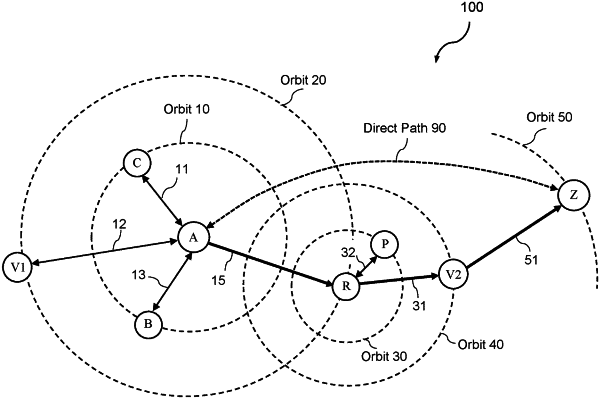| CPC H04L 67/1093 (2013.01) [H04L 45/121 (2013.01); H04L 47/283 (2013.01)] | 21 Claims |

|
1. A method for autonomously routing data in a peer-to-peer computer network, comprising:
automatically updating the peer-to-peer computer network comprising a plurality of nodes, comprising:
automatically sending pulse messages from a first node to neighbor nodes and candidate nodes associated with the first node;
dynamically adjusting time intervals between the pulse messages;
in response to the pulse messages, receiving return pulses by the first node from at least some of the neighbor nodes and the candidate nodes;
calculating round-trip times (RTTs) between the first node and the neighbor nodes or the candidate nodes based on the pulse messages and the return pulses;
sorting the neighbor nodes and the candidate nodes into a plurality of orbital bins each characterized by a specific interval of the RTTs associated with the first node; and
based on the RTTs, automatically selecting and assigning a node from one of the orbital bins to update the neighbor nodes associated with the first node; and
automatically relaying the data from the first node to a second node by one of the neighbor nodes associated with the first node.
|